The Art of Slow Travel
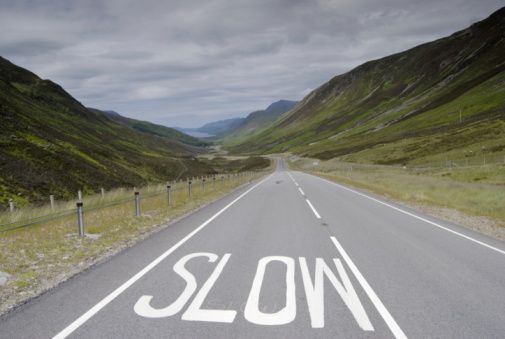
In a world where we are constantly rushing from one place to another, taking a step back and slowing down can be a refreshing change.
Slow travel, a form of travel that emphasizes taking the time to fully experience and appreciate a destination, is becoming increasingly popular for those seeking a more meaningful and immersive travel experience. But why does slow travel matter?
First and foremost, slow travel allows us to truly get to know a place. Instead of rushing through a city to check off tourist attractions, slow travel involves spending more time in one place and engaging with local people and culture.
This allows us to discover hidden gems and unique cultural practices that we might otherwise miss. We can gain a deeper understanding and appreciation of the places we visit, and connect with them in a more meaningful way.
Slow travel also promotes sustainable tourism. By taking the time to explore a destination more thoroughly, we can reduce our negative impact on the environment, economy, and local communities.
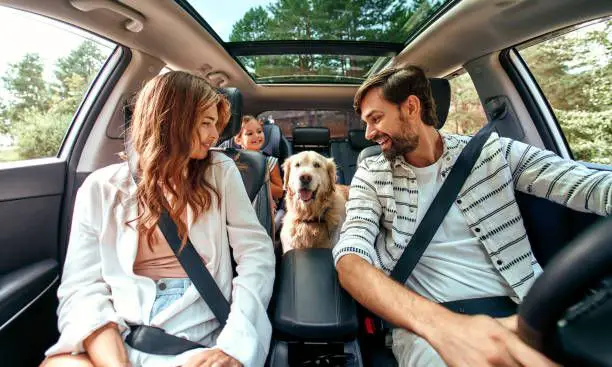
When we rush through a place, we contribute to overtourism, which can cause overcrowding, environmental degradation, and cultural homogenization.
Slow travel allows us to travel in a more responsible and sustainable way, supporting local businesses and engaging in activities that benefit the local community.
In addition, slow travel can have a positive impact on our mental health and wellbeing. Traveling can be stressful, with constant flights, hotel changes, and hectic schedules.
Slow travel allows us to disconnect from the stresses of daily life and embrace a more relaxed and mindful approach to travel. By taking the time to slow down, we can appreciate the little things, such as a beautiful sunset or a delicious meal, and savor each moment of our trip.
Furthermore, slow travel can create lasting memories and meaningful connections. By spending more time in one place, we have the opportunity to build relationships and community with locals and other travelers.
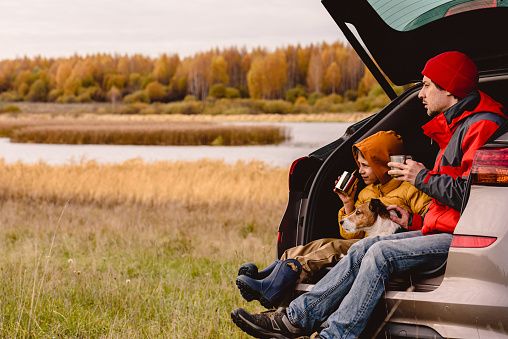
We can engage in cultural exchanges and learn from different perspectives, broadening our horizons and challenging our assumptions. Slow travel can also be a great way to connect with ourselves, giving us time to reflect on our lives and priorities.
Of course, slow travel is not without its challenges. It requires patience, flexibility, and a willingness to embrace uncertainty. It may also be more expensive, as we spend more time in one place and engage in activities that may be off the beaten path.
However, for those who are willing to take the time and effort, slow travel can be an incredibly rewarding and enriching experience.
In conclusion, slow travel matters because it allows us to truly experience and appreciate the places we visit, while promoting sustainability, mental wellbeing, and meaningful connections.
It encourages us to embrace a more relaxed and mindful approach to travel, and to appreciate the little things in life. Slow travel may not be for everyone, but for those who are willing to take the time and effort, it can be an incredibly transformative and unforgettable experience.
Slow Travel vs. Fast Travel
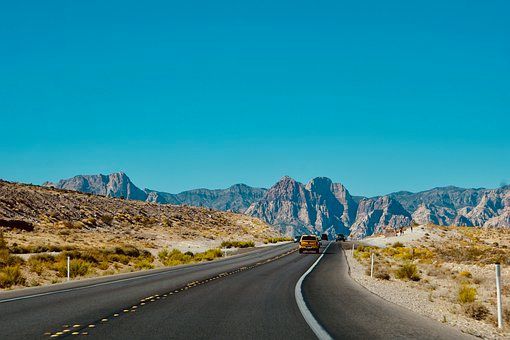
Slow travel and fast travel are two different approaches to exploring the world, and they offer very different experiences.
Fast travel is all about maximizing the number of destinations you can see in a short amount of time. It often involves rushing from one attraction to the next, ticking items off a bucket list, and trying to cram as much sightseeing as possible into a few days or weeks.
This can be an exciting and thrilling way to travel, but it can also be exhausting and stressful. Fast travel is often associated with a more superficial experience of a destination, as you don't have the time to really get to know a place or form deep connections with locals.
On the other hand, slow travel is a more mindful and intentional approach to exploring the world. It involves taking your time, being present in the moment, and fully immersing yourself in the culture and surroundings of your destination.
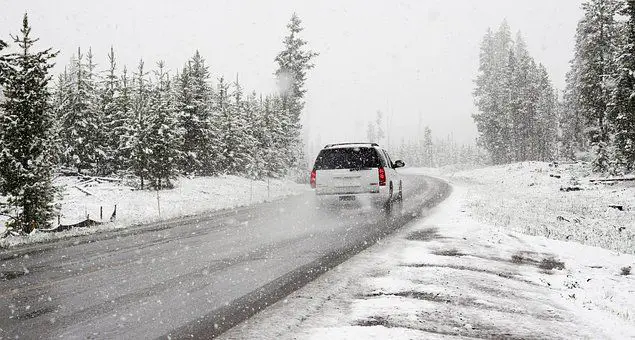
Slow travel is about savoring experiences, forming connections with locals, and gaining a deeper understanding of the places you visit. It often involves staying in one place for a longer period of time, using local transportation options, and embracing the local culture.
Slow travel can be a more relaxing and enriching way to travel, but it does require more time and a willingness to let go of the desire to see and do everything.
Ultimately, whether you choose to travel fast or slow depends on your personal preferences and travel goals. If you're interested in a more superficial experience of a destination and want to see as much as possible in a short amount of time, fast travel may be the way to go.
But if you're looking for a more meaningful and transformative travel experience, slow travel is a great way to fully immerse yourself in the local culture and create lasting memories.
Mindful Travel

Mindful travel is about cultivating an attitude of awareness and presence as you explore the world. It involves being fully engaged in the present moment and paying attention to your surroundings, your thoughts, and your emotions.
Mindful travel can help you feel more connected to the places you visit, reduce stress and anxiety, and enhance your overall travel experience.
Here are some tips for practicing mindful travel:
1. Set an intention: Before you embark on your trip, take a few minutes to set an intention for your travels. This could be as simple as a desire to be present in the moment, or a goal to learn more about the local culture.
2. Slow down: Instead of rushing from one attraction to the next, take your time and really soak in the atmosphere of your destination. Notice the sights, sounds, and smells around you, and be present in the moment.
3. Connect with locals: Mindful travel is about forming connections with the people and places you visit. Take the time to meet locals, learn about their culture and way of life, and form meaningful relationships.
4. Practice gratitude: Take a moment each day to reflect on the things you're grateful for. This can help you stay grounded and appreciate the beauty of your surroundings.
5. Be open to new experiences: Mindful travel involves being open to new experiences and stepping outside of your comfort zone. Try new foods, participate in local customs and traditions, and embrace the unexpected.
6. Practice self-care: Travel can be stressful, so make sure to take care of yourself physically and mentally. Get enough rest, eat well, and take breaks when you need them.
By practicing mindful travel, you can create a deeper, more meaningful travel experience that allows you to connect with the world around you and cultivate a sense of awareness and presence in your daily life.
Benefits of Slow Travel

There are several benefits to slow travel, including personal growth, improved mental health, and increased sustainability.
1. Personal Growth: Slow travel provides an opportunity for personal growth and self-discovery. By immersing yourself in a new culture, learning about local customs, and meeting new people, you can broaden your horizons and gain a deeper understanding of the world.
2. Mental Health: Slow travel can also have a positive impact on mental health. By taking a more relaxed and mindful approach to travel, you can reduce stress and anxiety, improve sleep quality, and increase feelings of happiness and well-being.
3. Sustainability: Slow travel is also more sustainable than traditional fast-paced travel. By staying in one place for a longer period of time and using local transportation options, you can reduce your carbon footprint and minimize the impact of your travels on the environment.
4. Authentic Experience: Slow travel allows you to experience a destination more authentically. By taking your time, immersing yourself in the local culture, and forming connections with locals, you can gain a deeper understanding of a place and create lasting memories.
5. Cultural Exchange: Slow travel provides an opportunity for cultural exchange. By engaging with locals and learning about their way of life, you can broaden your perspective and gain a greater appreciation for diversity.
In summary, slow travel offers a more relaxed and mindful approach to exploring the world, with many benefits including personal growth, improved mental health, and increased sustainability.
By taking the time to fully immerse yourself in a destination, you can create a more authentic and meaningful travel experience that will stay with you long after your trip is over.
Planning a Slow Travel Trip

Planning a slow travel trip can be a rewarding and enriching experience. Here are some tips and strategies to help you plan your next slow travel adventure:
1. Choose your destination wisely: When planning a slow travel trip, it's important to choose a destination that aligns with your interests and goals. Consider places with rich cultural traditions, natural beauty, or historical significance.
2. Plan for a longer stay: Slow travel often involves staying in one place for a longer period of time. Consider renting a vacation home or apartment for a week or more, or booking accommodations in smaller, less touristy towns.
3. Research local transportation options: To fully immerse yourself in a destination, consider using local transportation options such as buses, trains, or bicycles. This will allow you to see more of the local area and connect with locals.
4. Embrace local culture and customs: Slow travel is about experiencing a destination more authentically. Take the time to learn about local customs, try new foods, and participate in cultural events.
5. Connect with locals: Slow travel provides an opportunity to form meaningful connections with locals. Consider joining a local group or taking a class to meet new people and learn more about the local community.
6. Allow for downtime: Slow travel is all about taking your time and being present in the moment. Allow for downtime in your itinerary to relax, reflect, and enjoy the local atmosphere.
7. Be flexible: One of the benefits of slow travel is the ability to be flexible and spontaneous. Leave some room in your itinerary for unexpected adventures and opportunities to connect with locals.
By following these tips and strategies, you can plan a slow travel trip that allows you to fully immerse yourself in a destination, connect with locals, and create lasting memories.
Exploring a Destination Through Local Eyes

Exploring a destination through local eyes is one of the best ways to have an immersive travel experience. Here are some ideas for immersive travel experiences that can help you see a destination from a local perspective:
1. Stay with a local host: Instead of booking a hotel, consider staying with a local host through platforms such as Airbnb or Couchsurfing. This will give you the opportunity to learn about local culture and customs from someone who knows the area well.
2. Take a local food tour: Food is an important part of any culture, and taking a local food tour is a great way to experience a destination through your taste buds. Look for tours that are led by locals and visit off-the-beaten-path restaurants and markets.
3. Join a local group or organization: Joining a local group or organization can help you connect with locals who share your interests. This could be a hiking group, a book club, or a language exchange program.
4. Attend a local festival or event: Festivals and events are a great way to experience a destination's unique culture and traditions. Look for events that are off the tourist trail and attended by locals.
5. Volunteer with a local organization: Volunteering with a local organization is a great way to give back to the community while also getting to know locals and learning about the area.
6. Hire a local guide: Hiring a local guide is a great way to learn about the history and culture of a destination. Look for guides who are passionate about their area and can provide a personalized experience.
By exploring a destination through local eyes, you can gain a deeper understanding and appreciation for the local culture and way of life. These immersive travel experiences can create lasting memories and provide a more meaningful travel experience.
Slow Food

Slow Food is a global movement that advocates for local and traditional cuisine, and promotes a more sustainable and equitable food system. The movement began in Italy in the 1980s as a response to the rise of fast food and industrial agriculture.
Slow Food emphasizes the importance of savoring and enjoying food, and encourages people to take the time to appreciate the flavors, textures, and cultural traditions associated with local cuisine.
The movement also supports small-scale, sustainable agriculture and food production, and works to preserve traditional food knowledge and culinary practices.
One of the ways to experience Slow Food is by seeking out restaurants and markets that prioritize local and sustainable ingredients. Look for restaurants that use locally sourced ingredients, and markets that feature regional specialties and artisanal products.
Another way to experience Slow Food is by attending food festivals and events that celebrate local cuisine and cultural traditions. These events often feature cooking demonstrations, tastings, and opportunities to meet local producers and chefs.
By embracing Slow Food, you can savor the unique flavors and cultural traditions of a destination, while also supporting sustainable agriculture and local communities. Slow Food is a delicious and meaningful way to connect with a destination and its people.
Alternative Accommodation Options

Alternative accommodation options such as homestays, farmstays, and house swaps provide travelers with unique and authentic experiences that are different from traditional hotel stays. Here are some details about each option:
1. Homestays: Homestays offer travelers the opportunity to stay with a local family in their home. This option provides an immersive cultural experience, as travelers can learn about local customs and traditions from their hosts. Homestays are often available through homestay platforms such as Homestay.com and Airbnb.
2. Farmstays: Farmstays are accommodations that allow travelers to stay on a working farm or ranch. This option provides an opportunity to experience rural life and learn about farming practices. Some farmstays offer guests the chance to participate in farm activities such as milking cows or picking vegetables.
3. House swaps: House swaps involve trading homes with another traveler for a specified period of time. This option provides the opportunity to experience life in a different part of the world and live like a local. House swap platforms such as HomeExchange and Love Home Swap make it easy to find potential exchange partners.
These alternative accommodation options offer travelers the chance to experience destinations in a more meaningful and authentic way, while also supporting local communities. Each option provides a unique experience that can create lasting memories and expand cultural horizons.
Slow Travel on a Budget

Slow travel can be a great way to travel more mindfully and affordably. Here are some tips for slow travel on a budget:
1. Choose affordable destinations: Look for destinations that are less expensive to travel to, such as countries with lower costs of living or destinations off the beaten path.
2. Travel during the shoulder season: Travel during the shoulder season (the period between peak and off-peak seasons) when prices for accommodation and activities are often lower.
3. Use alternative accommodation: Instead of staying in hotels, consider using alternative accommodation options such as hostels, camping, or homestays. These options are often more affordable and provide a more authentic travel experience.
4. Cook your own meals: Eating out can be expensive, so consider cooking your own meals using local ingredients. This can also be a fun way to learn about local cuisine and culture.
5. Walk or use public transportation: Instead of renting a car or taking taxis, walk or use public transportation to get around. This can be a more affordable and environmentally friendly way to explore a destination.
6. Plan ahead: Research and plan ahead to find affordable activities, free events, and local festivals. This can help you make the most of your travel budget while experiencing the local culture.
By following these tips, you can travel more mindfully and affordably, while still having a meaningful and authentic travel experience.
Slow travel on a budget can provide a deeper appreciation for a destination and its people, and can create lasting memories that don't break the bank.
Making Meaningful Connections

One of the benefits of slow travel is the opportunity to build meaningful relationships and connect with local communities. Here are some tips for building relationships and community while traveling slowly:
1. Volunteer: Consider volunteering with a local organization or community project. This can be a great way to meet locals and learn about their culture while making a positive impact.
2. Attend local events: Attend local events such as festivals, concerts, and markets to meet locals and experience the local culture. These events often provide opportunities to interact with locals and learn about their traditions.
3. Take a class: Sign up for a class or workshop to learn a new skill or craft, such as cooking, dancing, or language lessons. This can be a fun way to connect with locals who share similar interests.
4. Join a community group: Look for local community groups such as hiking clubs, art clubs, or book clubs to join. These groups can provide opportunities to meet like-minded locals and participate in community activities.
5. Stay with locals: Consider using homestay platforms or staying in a guesthouse run by locals. This can provide opportunities to interact with locals on a daily basis and learn about their way of life.
By taking the time to connect with locals and immerse yourself in the local culture, you can build meaningful relationships and create a sense of community while traveling slowly.
These connections can provide a deeper understanding and appreciation for a destination, and can make your travel experience more rewarding and fulfilling.
The Art of Doing Nothing

The art of doing nothing, or "il dolce far niente" as the Italians say, is an important aspect of slow travel. Here are some tips for embracing slow living and relaxation while traveling:
1. Take time to relax: Schedule time in your itinerary to relax and unwind. This could mean lounging on a beach, reading a book in a park, or simply taking a nap.
2. Enjoy the local cuisine: Slow travel is all about savoring the local culture, and food is a big part of that. Take the time to enjoy local cuisine and savor each bite.
3. Observe local life: Take time to observe the daily life of locals. Watch how they interact, work, and enjoy their free time. This can provide a deeper understanding of the local culture.
4. Practice mindfulness: Slow travel is about being present in the moment. Practice mindfulness techniques such as meditation or deep breathing to help you stay in the present moment and appreciate your surroundings.
5. Disconnect from technology: Take a break from technology and social media. This can help you focus on the present moment and connect with your surroundings.
6. Get lost: Sometimes the best experiences come from getting lost and wandering without a plan. Allow yourself to explore without a strict itinerary and see where the journey takes you.
By embracing slow living and relaxation while traveling, you can create a more meaningful and fulfilling travel experience. Slow travel is about savoring the journey, not just the destination, and taking the time to enjoy each moment. So take a deep breath, relax, and enjoy the art of doing nothing.
Slow Travel for Families

Slow travel is not just for solo travelers or couples, it can also be a great way for families to create meaningful memories together. Here are some tips for slow travel with kids:
1. Involve your children in the planning process: Ask your children what they would like to see and do on the trip. This can help them feel invested in the journey and excited about the experience.
2. Take it slow: Slow travel with kids means taking the time to explore at a relaxed pace, rather than rushing from one attraction to another. Schedule time for spontaneous activities and allow plenty of time for breaks.
3. Stay in family-friendly accommodations: Consider staying in homestays or vacation rentals that are family-friendly and provide more space than traditional hotel rooms. This can provide a more comfortable and relaxed atmosphere for your family.
4. Focus on experiences: Slow travel is about savoring the journey and the experiences along the way. Focus on activities that allow your family to connect with the local culture and create meaningful memories together.
5. Allow for downtime: Children need downtime to recharge and relax, so schedule time for quiet activities such as reading, drawing, or playing games.
6. Connect with locals: Slow travel is about connecting with the local community. Encourage your children to interact with locals and learn about their culture.
By embracing slow travel with your family, you can create meaningful memories and strengthen your family bonds. Slow travel with kids can be a wonderful way to explore the world and teach your children about different cultures and ways of life.
Sustainable Travel Practices

Sustainable travel practices are an important aspect of slow travel. Here are some tips for reducing your environmental impact while traveling slowly:
1. Choose eco-friendly accommodations: Look for accommodations that have a green certification or have implemented eco-friendly practices such as recycling, reducing energy and water consumption, and using sustainable materials.
2. Use public transportation or walk: One of the benefits of slow travel is that it allows you to explore a destination at a relaxed pace. Choose to walk, bike or use public transportation rather than renting a car or taking a taxi to reduce your carbon footprint.
3. Bring a refillable water bottle: Single-use plastic bottles are a major contributor to environmental pollution. Bring a refillable water bottle and use it throughout your trip.
4. Reduce waste: Choose to eat at restaurants that use eco-friendly practices such as composting and avoiding single-use plastics. Avoid using disposable items like straws, napkins, and cutlery.
5. Support local businesses: Buying local products and supporting local businesses can help reduce the carbon footprint associated with importing goods from other regions.
6. Choose sustainable activities: When planning activities, choose those that have a low environmental impact, such as hiking, swimming in natural bodies of water, or visiting cultural sites that have implemented sustainable practices.
By practicing sustainable travel habits, you can reduce your environmental impact and contribute to the preservation of the environment. Sustainable travel practices are essential to preserving the destinations we visit and ensuring they remain enjoyable for future generations.
Solo Slow Travel

Solo slow travel can be a transformative experience, allowing you to fully embrace independence while also connecting with others and the world around you. Here are some tips for solo slow travel:
1. Embrace the journey: Slow travel is about savoring the journey, so take your time and enjoy the moments along the way.
2. Connect with locals: Slow travel allows you to connect with locals and learn about their culture. Talk to people, try local foods, and participate in cultural activities.
3. Stay in local accommodations: Instead of staying in traditional hotels, consider staying in homestays, guesthouses or Airbnbs. This can provide a more authentic experience and allow you to connect with locals.
4. Be open to new experiences: Solo slow travel is an opportunity to step out of your comfort zone and try new things. Be open to unexpected opportunities and experiences.
5. Practice self-care: Solo travel can be rewarding, but it can also be challenging. Take time to practice self-care, whether that means taking a break or engaging in activities that bring you joy.
6. Stay safe: While solo slow travel can be a great opportunity for independence, it’s important to prioritize safety. Research the destination, take precautions, and trust your instincts.
By embracing solo slow travel, you can experience the world on your own terms, while also connecting with others and gaining new perspectives. It can be a transformative and empowering experience, allowing you to grow and learn about yourself and the world around you.
Challenges of Slow Travel

While slow travel can be a rewarding and transformative experience, it also comes with its own set of challenges. Here are some of the challenges of slow travel and tips for embracing them:
1. Uncertainty: Slow travel often means being open to unexpected experiences and embracing uncertainty. This can be challenging for those who like to have a set itinerary or plan.
Tip: Embrace the unknown and allow yourself to be flexible. Trust that everything will work out and focus on enjoying the journey, even if it doesn’t go as planned.
2. Setbacks: Travel setbacks, such as missed flights or cancelled accommodations, can be stressful and disruptive to your plans.
Tip: Embrace setbacks as an opportunity to learn and grow. Use the setback as a chance to explore a different part of the destination or try something new. Remember that setbacks are often part of the adventure and can lead to unexpected discoveries.
3. Loneliness: Slow travel can also be lonely, especially for solo travelers or those traveling for extended periods of time.
Tip: Connect with locals and other travelers to combat loneliness. Join a group tour or attend a local event or activity. Stay in accommodations that encourage social interaction, such as hostels or homestays.
4. Language barriers: Slow travel often involves immersing yourself in different cultures and languages, which can be challenging for those who don’t speak the local language.
Tip: Embrace the opportunity to learn a new language or use translation apps to communicate. Engage with locals and learn key phrases to help you navigate the destination.
By embracing the challenges of slow travel, you can learn to be more adaptable and open to new experiences. Remember that setbacks and uncertainty are often part of the journey and can lead to unexpected discoveries and personal growth.
Conclusion
The Art of Slow Travel is a travel philosophy that emphasizes taking the time to truly experience a place and its culture.
Slow travel involves staying longer in each place, seeking out off-the-beaten-path destinations and activities, using sustainable modes of transportation, connecting with locals, and embracing serendipity.
The goal of slow travel is to savor the journey and immerse oneself in the local culture, rather than just ticking off a list of tourist attractions.
By approaching travel in a more mindful and intentional way, slow travelers can have more authentic and rewarding experiences.
